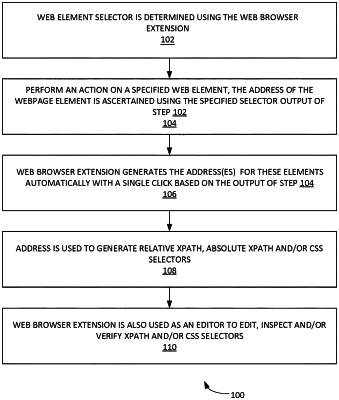| CPC G06F 16/9574 (2019.01) [G06F 3/0481 (2013.01); G06F 3/0485 (2013.01); G06F 8/61 (2013.01); G06F 16/986 (2019.01); G06F 40/143 (2020.01)] | 18 Claims |

|
10. A computer system, comprising:
memory in which a web-browser extension has been installed; and
one or more processing units configured to, in connection with executing the web-browser extension:
receive a first selector pattern through the web-browser extension, wherein the first selector pattern is an XPath selector pattern or a Cascading Style Sheets (CSS) selector pattern;
search a Document Object Model (DOM) of a webpage to locate one or more matching nodes that satisfy the first selector pattern;
present the one or more matching nodes in a first window associated with the web-browser extension;
receive a first user input after presenting the one or more matching nodes, wherein the first user input identifies a web element associated with a first node among the one or more matching nodes;
generate at least one selector for the web element in response to the first user input, wherein the at least one selector comprises a relative XPath selector, and wherein to generate the at least one selector, the one or more processing units are configured to determine a pattern of the relative XPath selector;
present the at least one selector through the web-browser extension; and
copy the at least one selector in response to a second user input, the second user input being received after the at least one selector has been presented.
|